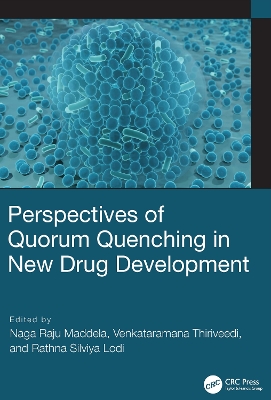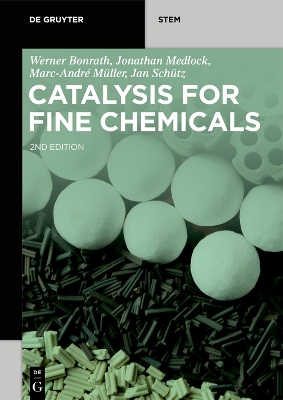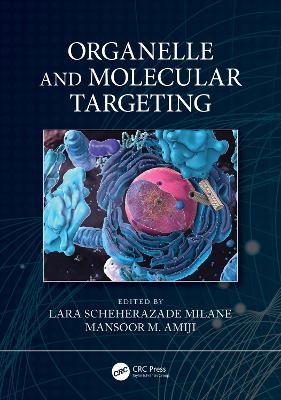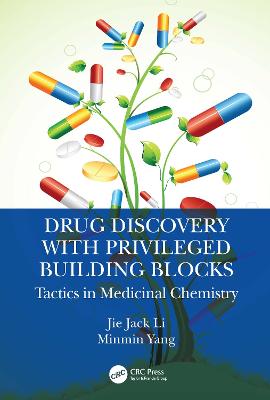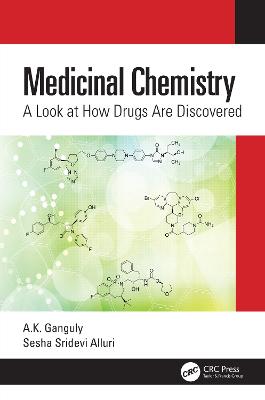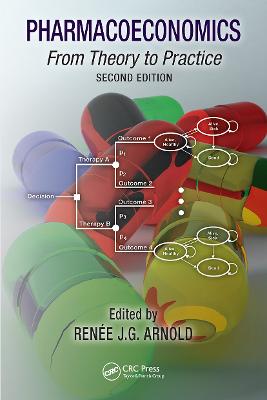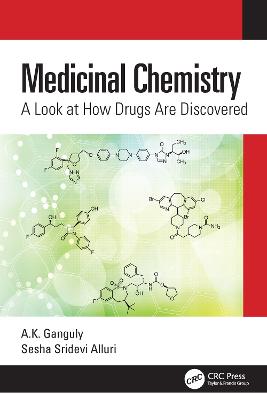Predicting Solubility of New Drugs
 portes grátis
portes grátis
Predicting Solubility of New Drugs
Handbook of Critically Curated Data for Pharmaceutical Research
Avdeef, Alex
Taylor & Francis Ltd
05/2024
1710
Dura
Inglês
9781032617671
Pré-lançamento - envio 15 a 20 dias após a sua edição
1.1 'Not too little - not too much',
1.2 Why a Database of Aqueous Intrinsic Solubility?
1.3 Database
1.4 Measurements Can Be Improved
1.5 Solubility-pH Profiles, Intrinsic Solubility, and Profile Distortions
2 Physicochemical Properties of Wiki-pS0 Database Molecules
2.1 Most Molecules in Database are Drug-Like or Drug-Relevant
2.2 Distribution of Intrinsic Solubility
2.3 Interlaboratory Variance
2.4 Quality and Chemical Space of Experimental Data
2.5 PROTACs: Lipinski's 'Rule Of 5' Characteristics
2.6 Newly-Approved Drugs: Lipinski's 'Rule Of 5' Characteristics
2.7 Kier Flexibility Index, ?, and Abraham H-Bond Acceptor Potential, B
2.8 Principal Component Analysis
2.9 Quantitative Estimate of Drug-Likeness
3 Solubility Prediction Methods
3.1 Overview of Solubility Prediction Models
3.2 Gap between Prediction and Measurement
3.3 Yalkowsky General Solubility Equation (GSE)
3.4 'Flexible-Acceptor' General Solubility Equation, GSE(?,B)
3.5 Abraham Solvation Equation (ABSOLV)
3.6 Breiman Random Forest Regression
4 Predicting of Solubility of PROTACs
4.1 Determination of the Three GSE(?,B) Coefficients from Training Set Iso-(?+B) Bins
4.2 'Flexible-Acceptor' Lipophilicity
4.3 ABSOLV Trained to Predict the Intrinsic Solubility of PROTACs
4.4 RFR Training
4.5 Training Set Performances
4.6 Effect of Small Amounts of DMSO (? 5 vol%)
4.7 Predicting Solubility of PROTACs
5 Predicting of Solubility of New Drugs
5.1 Trends in Physicochemical Properties of Emerging Drugs
5.2 Characteristics of Emerging Drugs (2016-2022)
5.3 Re-training of the Training Sets
5.4 Predicting Solubility of Newly-Approved Drugs
5.5 Striving for Similarity Between Training Set and Test Set
6 Instruments with 'Intelligence'
6.1 Bjerrum Difference Plots for Saturated Solutions - Normalized Titration Curves
6.2 'Intelligent' Assay: Noyes-Whitney 'Dissolution Titration Template' (DTT) Method
6.3 High-Throughput Solubility Instrument with DMSO Bias Correction
6.4 Where to Aim Next
Appendix - Data Sources, Solubility Definitions, Unit Conversions
A1 Data Sources in Wiki-pS0 Database
A1.1 'Kinetic Solubility' Measurements
A1.2 Data for FDA Newly-Approved Drugs (2016-2022)
A1.3 Data from Secondary Sources
A.1.4 Single-Source Measurements
A1.5 Data from Miscellaneous Primary Sources
A1.6 Sources of pKa Data
A2 Definitions, Supersaturation, Cosolvents
A2.1 Consensus Recommendations
A2.2 pH Measurement
A3 Solubility Units - Conversions to Molarity
A4 Different Types of Aqueous Solubility of Ionizable Molecules
A4.1 Single-Point Water Solubility of Free Acid/Base (S? /S? for Free Acid/Base, or Simply Sw)
A4.2 Single-Point Solubility at a Particular Buffered pH (SpH)
A4.3 Single-Point Intrinsic Solubility (S0)
A4.4 Single-Point Water Solubility of Non-Disproportionating ?-Type Salt (Ssalt or S?)
A4.5 Single-Point Water Solubility of Disproportionating ?-Type Salt (S? )
General References
Tabulation Organization and Notes
TABULATION 1 - Wiki-pS0
TABULATION 2 - DMSO Bias-Corrected Solubility
Tabulation References
Index of Topics
Index of Molecule Names
Index of Registry Numbers (RN)
1.1 'Not too little - not too much',
1.2 Why a Database of Aqueous Intrinsic Solubility?
1.3 Database
1.4 Measurements Can Be Improved
1.5 Solubility-pH Profiles, Intrinsic Solubility, and Profile Distortions
2 Physicochemical Properties of Wiki-pS0 Database Molecules
2.1 Most Molecules in Database are Drug-Like or Drug-Relevant
2.2 Distribution of Intrinsic Solubility
2.3 Interlaboratory Variance
2.4 Quality and Chemical Space of Experimental Data
2.5 PROTACs: Lipinski's 'Rule Of 5' Characteristics
2.6 Newly-Approved Drugs: Lipinski's 'Rule Of 5' Characteristics
2.7 Kier Flexibility Index, ?, and Abraham H-Bond Acceptor Potential, B
2.8 Principal Component Analysis
2.9 Quantitative Estimate of Drug-Likeness
3 Solubility Prediction Methods
3.1 Overview of Solubility Prediction Models
3.2 Gap between Prediction and Measurement
3.3 Yalkowsky General Solubility Equation (GSE)
3.4 'Flexible-Acceptor' General Solubility Equation, GSE(?,B)
3.5 Abraham Solvation Equation (ABSOLV)
3.6 Breiman Random Forest Regression
4 Predicting of Solubility of PROTACs
4.1 Determination of the Three GSE(?,B) Coefficients from Training Set Iso-(?+B) Bins
4.2 'Flexible-Acceptor' Lipophilicity
4.3 ABSOLV Trained to Predict the Intrinsic Solubility of PROTACs
4.4 RFR Training
4.5 Training Set Performances
4.6 Effect of Small Amounts of DMSO (? 5 vol%)
4.7 Predicting Solubility of PROTACs
5 Predicting of Solubility of New Drugs
5.1 Trends in Physicochemical Properties of Emerging Drugs
5.2 Characteristics of Emerging Drugs (2016-2022)
5.3 Re-training of the Training Sets
5.4 Predicting Solubility of Newly-Approved Drugs
5.5 Striving for Similarity Between Training Set and Test Set
6 Instruments with 'Intelligence'
6.1 Bjerrum Difference Plots for Saturated Solutions - Normalized Titration Curves
6.2 'Intelligent' Assay: Noyes-Whitney 'Dissolution Titration Template' (DTT) Method
6.3 High-Throughput Solubility Instrument with DMSO Bias Correction
6.4 Where to Aim Next
Appendix - Data Sources, Solubility Definitions, Unit Conversions
A1 Data Sources in Wiki-pS0 Database
A1.1 'Kinetic Solubility' Measurements
A1.2 Data for FDA Newly-Approved Drugs (2016-2022)
A1.3 Data from Secondary Sources
A.1.4 Single-Source Measurements
A1.5 Data from Miscellaneous Primary Sources
A1.6 Sources of pKa Data
A2 Definitions, Supersaturation, Cosolvents
A2.1 Consensus Recommendations
A2.2 pH Measurement
A3 Solubility Units - Conversions to Molarity
A4 Different Types of Aqueous Solubility of Ionizable Molecules
A4.1 Single-Point Water Solubility of Free Acid/Base (S? /S? for Free Acid/Base, or Simply Sw)
A4.2 Single-Point Solubility at a Particular Buffered pH (SpH)
A4.3 Single-Point Intrinsic Solubility (S0)
A4.4 Single-Point Water Solubility of Non-Disproportionating ?-Type Salt (Ssalt or S?)
A4.5 Single-Point Water Solubility of Disproportionating ?-Type Salt (S? )
General References
Tabulation Organization and Notes
TABULATION 1 - Wiki-pS0
TABULATION 2 - DMSO Bias-Corrected Solubility
Tabulation References
Index of Topics
Index of Molecule Names
Index of Registry Numbers (RN)



